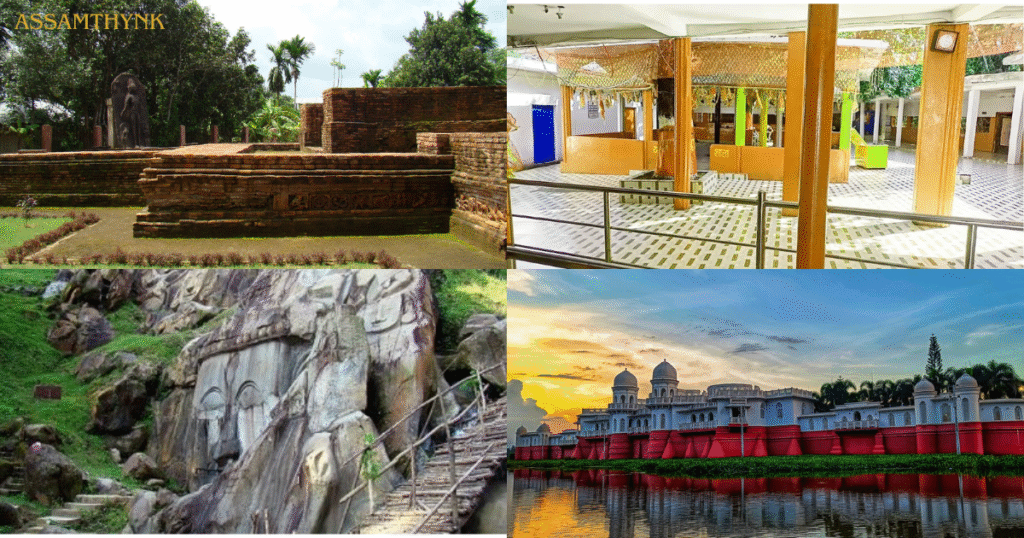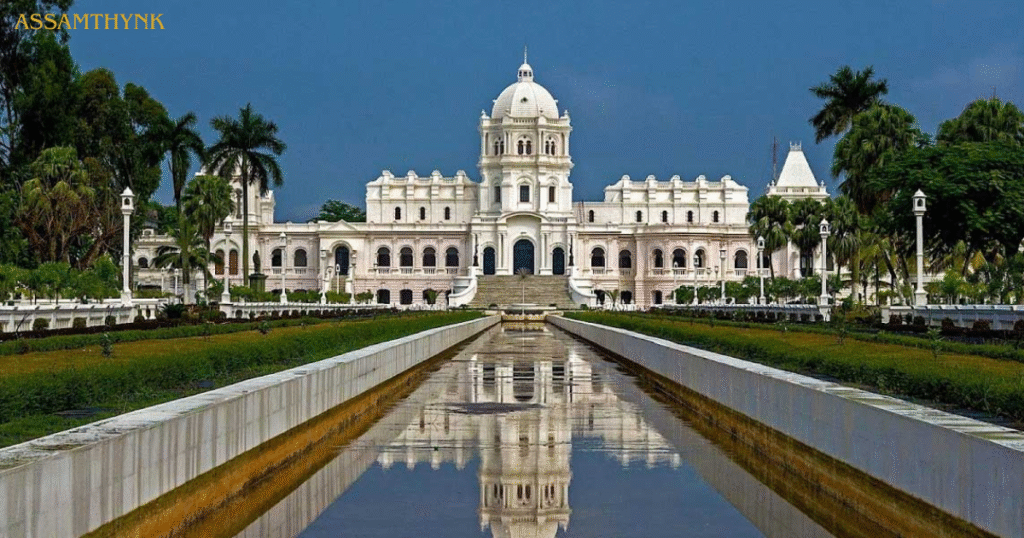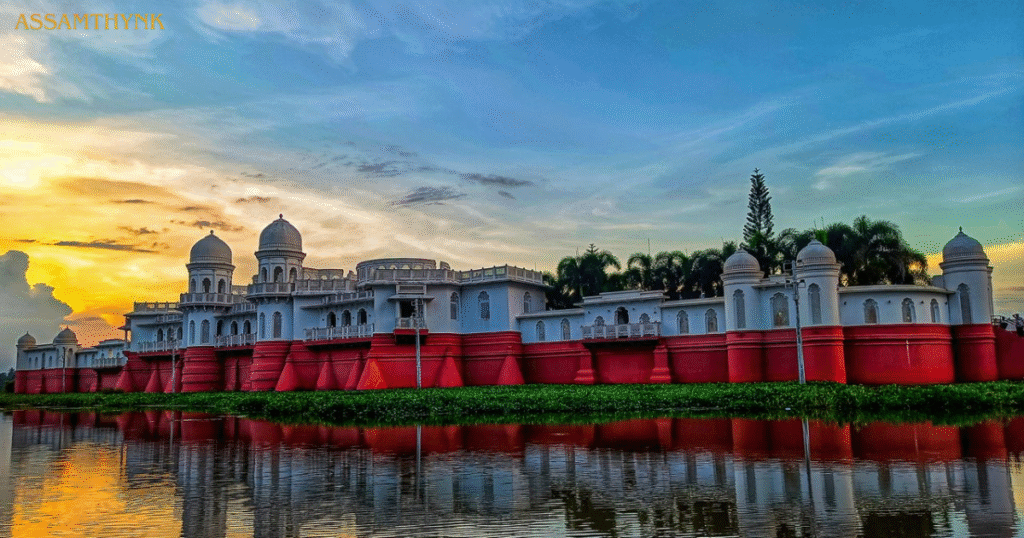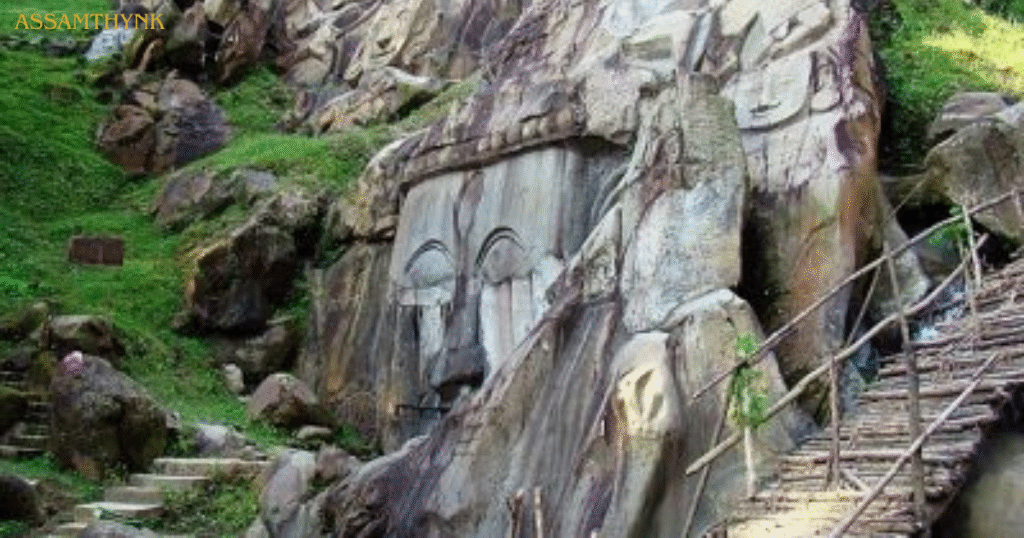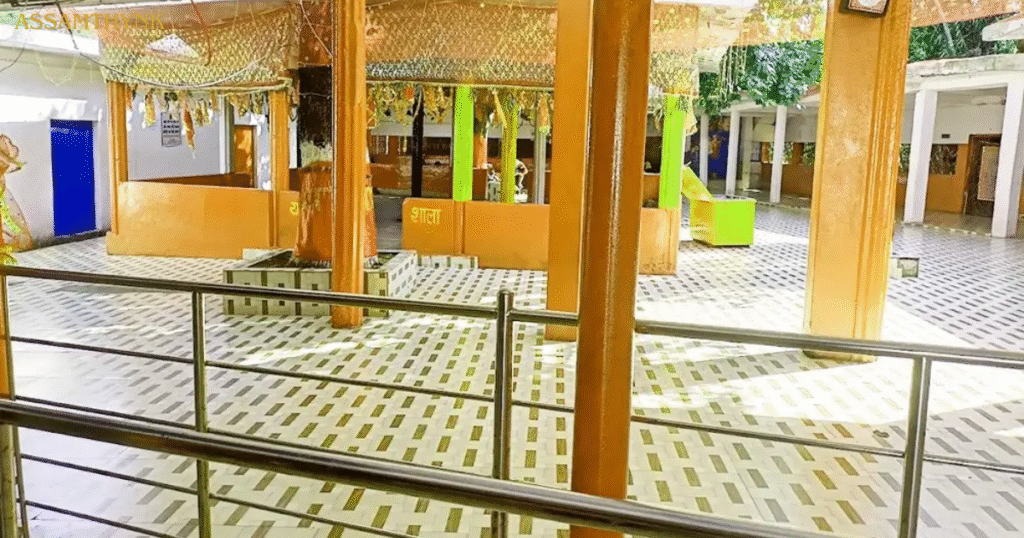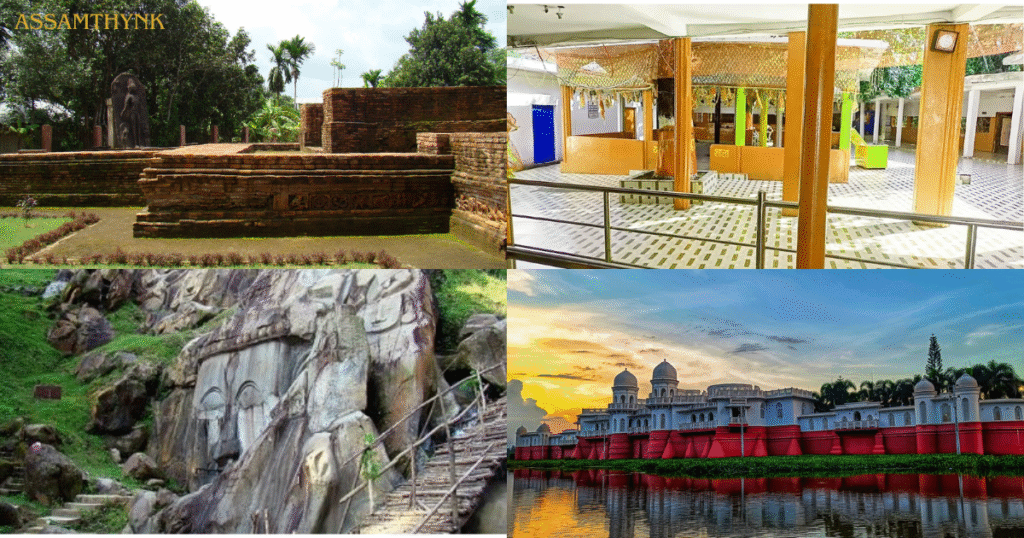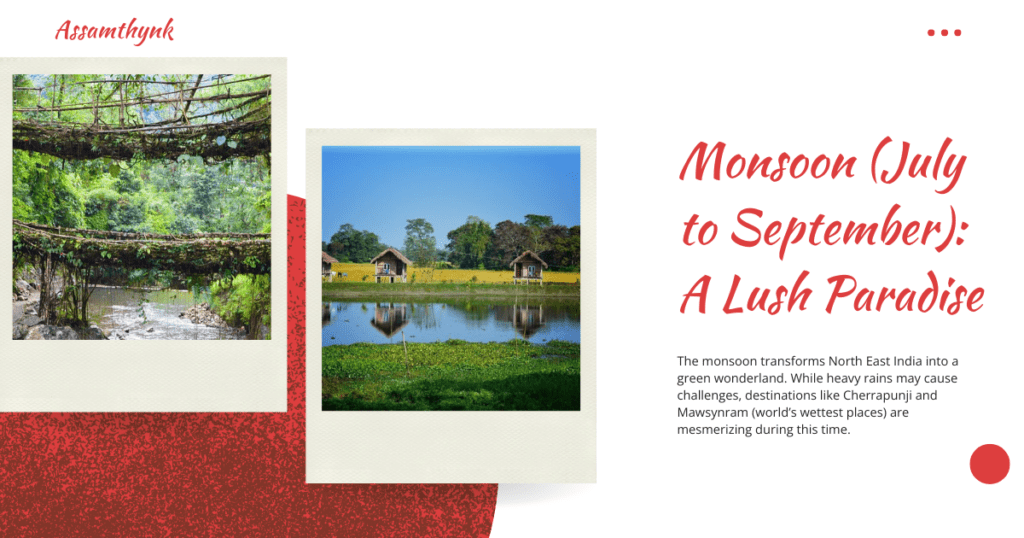Introduction
Tripura, one of the seven northeastern states of India, is a land where history, tradition, and natural beauty converge. Often overshadowed by its more popular neighbours, Tripura remains a hidden gem for cultural and heritage tourism. From the royal grandeur of ancient palaces to the sacred echoes of millennia-old temples, Tripura offers a rich and diverse heritage that speaks volumes about its past. This small but culturally vibrant state has seen the rise and fall of dynasties, the spread of Hindu and Buddhist philosophies, and the enduring presence of tribal traditions. Its monuments, relics, and folk practices stand as living testaments to a glorious legacy. For history enthusiasts, spiritual travellers, and cultural explorers, Tripura presents an extraordinary opportunity to witness the harmony of royal splendour and indigenous life. The charm of Tripura lies not just in its historical architecture but in the rhythm of its people’s lives – in their dances, festivals, crafts, and stories passed down through generations. As the world increasingly seeks meaningful and authentic travel experiences, Tripura’s heritage tourism is gaining well-deserved attention. This article explores the key destinations, monuments, and cultural landmarks that define heritage tourism in Tripura, while offering insights into its timeless traditions and how to explore them responsibly.
Ujjayanta Palace – The Royal Symbol of Tripura’s Monarchy
No heritage journey in Tripura can begin without mentioning Ujjayanta Palace, the crown jewel of the state’s royal history. Built in 1901 by Maharaja Radha Kishore Manikya, this grand white-domed palace is a stunning blend of Mughal, Roman, and British architectural styles. Located in the heart of Agartala, the capital city, Ujjayanta Palace served as the royal residence of the Manikya dynasty and is now home to the Tripura State Museum. The palace stands amidst lush Mughal-style gardens with fountains, ponds, and manicured lawns. Inside, the halls and galleries display royal portraits, ancient coins, art collections, weaponry, and cultural artefacts from various communities of Tripura. The museum offers a deep dive into the state’s ethnographic diversity, showcasing the tribal heritage and cultural evolution over centuries. The palace is also a symbol of Tripura’s integration into the Indian Union and reflects a period of transition from monarchy to democracy. A visit to Ujjayanta Palace is more than a tour; it is an immersive journey into the political and cultural heart of Tripura, and a must-visit for anyone wanting to understand the foundation of heritage tourism in the state.
Neermahal – The Water Palace of Eastern India
Floating on the Rudrasagar Lake, Neermahal or the “Water Palace” is an architectural marvel that tells the story of Tripura’s royal leisure. Constructed in the 1930s by Maharaja Bir Bikram Kishore Manikya, Neermahal is the largest water palace in India’s northeast and the only one of its kind in Eastern India. This magnificent structure was inspired by Rajasthan’s Jal Mahal, blending Hindu and Islamic architectural elements into a palace designed for recreation and summer retreats. The palace is divided into two parts – the western side was for the royal family and the eastern side for cultural performances and entertainment. Accessible by boat, the palace looks ethereal, especially during sunset when its reflection dances on the lake waters. Neermahal also hosts an annual water festival that includes boat races, cultural programs, and folk music, reviving the royal traditions. For heritage tourists, Neermahal offers not just architecture, but an experience of the royal lifestyle and how art, leisure, and nature intertwined in the culture of Tripura’s monarchy. It is a shining example of how the kings of Tripura embraced beauty, aesthetics, and cultural sophistication in their everyday lives.
Unakoti – Ancient Rock Carvings and Lost Legends
Unakoti, meaning “one less than a crore,” is one of India’s most mysterious and spiritual heritage sites. Located in the Unakoti district, this archaeological site is famous for its colossal rock carvings and bas-reliefs believed to date back to the 7th–9th centuries. Legends say that these 99,99,999 Shiva figures were sculpted overnight by a devotee named Kallu Kumar, who failed to complete the final image, and hence the name Unakoti. Carved into a lush forested hillside, the site features massive faces of Shiva, Ganesha, and Durga etched into the stone cliffs, surrounded by smaller carvings and natural springs. The 30-feet tall Unakotishwara face of Shiva is the centrepiece and a marvel of ancient rock artistry. While the origin of Unakoti remains unclear, the site is a powerful blend of mythology, art, and devotion. It attracts both pilgrims and history lovers who are fascinated by its scale, mystery, and spiritual ambiance. Surrounded by green hills and quiet trails, Unakoti offers a serene yet powerful experience of heritage. It is one of the finest examples of tribal and Brahmanical religious fusion in Indian history and a UNESCO World Heritage nomination-worthy site.
Tripura Sundari Temple – One of the 51 Shakti Peethas
Located in the ancient town of Udaipur, the Tripura Sundari Temple is a revered pilgrimage site and an integral part of the state’s spiritual heritage. Dedicated to Goddess Tripurasundari, the temple is believed to be over 500 years old and is considered one of the 51 Shakti Peethas — holy sites where parts of Goddess Sati are said to have fallen according to Hindu mythology. Built by Maharaja Dhanya Manikya in 1501, the temple is unique because the idol of the goddess is worshipped in the form of a 5-feet tall black stone image. Next to her, a smaller idol of Chhoti Maa is also worshipped, reflecting the tantric tradition of Tripura. The temple is shaped like a traditional Bengali hut with a square sanctum and curved roof, which gives it a distinct architectural identity. During Diwali, thousands of devotees visit the temple to take part in the grand mela, offering prayers and lighting lamps. The temple also reflects the deep cultural integration between Bengali and Tripuri traditions, both in ritual practices and language. For heritage tourists, the Tripura Sundari Temple is not just a religious site but a vital symbol of the state’s cultural unity and spiritual history.
Pilak – Where Buddhist and Hindu Sculptures Coexist
Pilak, located in the South Tripura district, is an archaeological treasure trove that showcases the co-existence of Hindu and Buddhist cultures during the 8th to 12th centuries. The site contains numerous terracotta plaques, stone sculptures, and brick-built shrines spread across the area. What makes Pilak unique is its representation of both Mahayana Buddhism and Hindu deities such as Shiva and Vishnu, indicating a time when religious harmony and cultural exchange flourished. The presence of Buddhist stupas, votive tablets, and Avalokiteshvara images, along with Hindu motifs and iconography, offers a glimpse into a period of cultural synthesis and trade links between Southeast Asia and the Indian subcontinent. Many of the artefacts unearthed here resemble those found in Bengal and Myanmar, pointing to Tripura’s role in regional cultural exchange. Today, the site is protected by the Archaeological Survey of India and is slowly gaining attention as a must-visit for heritage enthusiasts and scholars. Though less known to mainstream tourists, Pilak is a remarkable example of Tripura’s historical pluralism and its importance in the Buddhist and Hindu pilgrimage landscape. Visiting Pilak allows one to experience a forgotten chapter of Indian history, beautifully preserved in stone and soil.
Heritage Handicrafts and Folk Traditions of Tripura
Tripura’s heritage is not confined to monuments and temples alone. The state is equally known for its living cultural traditions, especially its handicrafts, music, and folk dances. Tripuri bamboo and cane craftsmanship is one of the finest in the country, producing elegant furniture, mats, baskets, and decorative items. These crafts are not only artistic but sustainable, using locally available materials and traditional knowledge. The tribal communities of Tripura also practice handloom weaving, creating colourful Rignai and Risa garments worn during festivals and special occasions. Folk dances like Hojagiri, performed by the Reang tribe, and Lebang Boomani, performed during harvest celebrations, reflect the agricultural rhythms and spiritual beliefs of the people. Storytelling through song, flute music, and indigenous instruments continues to thrive in village festivals and local gatherings. Heritage tourism in Tripura includes exploring rural life, interacting with artisans, and even participating in traditional cooking, weaving, and dance workshops. Cultural villages and tribal homestays are being developed to offer tourists an immersive experience. These elements of intangible heritage give depth to Tripura’s cultural identity and create meaningful connections between travellers and local communities, making heritage tourism not just a visit to the past but a dialogue with the present.
Responsible Tourism and Conservation Efforts
As Tripura slowly opens its doors to heritage tourism, the importance of preserving its monuments, traditions, and ecosystems cannot be overstated. Many sites like Unakoti and Pilak face threats from erosion, deforestation, and unregulated visitor activity. Awareness campaigns and conservation initiatives by the state government, local NGOs, and heritage bodies like INTACH are playing a crucial role in protecting these cultural assets. Sustainable tourism practices are being encouraged, including the use of eco-friendly transport, respect for tribal customs, and participation in local economies through handicraft purchases and community-based tourism. Educating travellers about the significance of these heritage sites and involving local youth in conservation activities is key to long-term success. Additionally, digital documentation, improved signage, and multilingual tourist information centres are helping make Tripura’s heritage more accessible without compromising its integrity. Tourists also have a role to play — by following guidelines, supporting local artisans, and spreading the word about Tripura’s cultural wealth, every visitor becomes a partner in preservation. As more people discover the charm of heritage tourism in Tripura, it is essential that development and protection go hand in hand to ensure that future generations can enjoy these timeless treasures.
Conclusion
Heritage tourism in Tripura offers a journey into the soul of a region that has long remained hidden from the tourist spotlight. From royal palaces like Ujjayanta and Neermahal to spiritual sites like Tripura Sundari and Unakoti, the state is rich in architectural and religious heritage. Add to that the ancient Buddhist relics of Pilak, vibrant tribal dances, and world-class bamboo handicrafts, and you have a destination that offers a complete and fulfilling cultural experience. What makes Tripura truly special is the authenticity and simplicity with which its heritage is presented. There are no crowds, no commercial hype – just a quiet invitation to connect with a rich and layered history. As more heritage seekers and cultural travellers look beyond mainstream destinations, Tripura stands ready to welcome them with open arms and stories untold. Whether you’re a history lover, a spiritual pilgrim, or a curious wanderer, the heritage of Tripura promises discovery, learning, and inspiration at every step.
